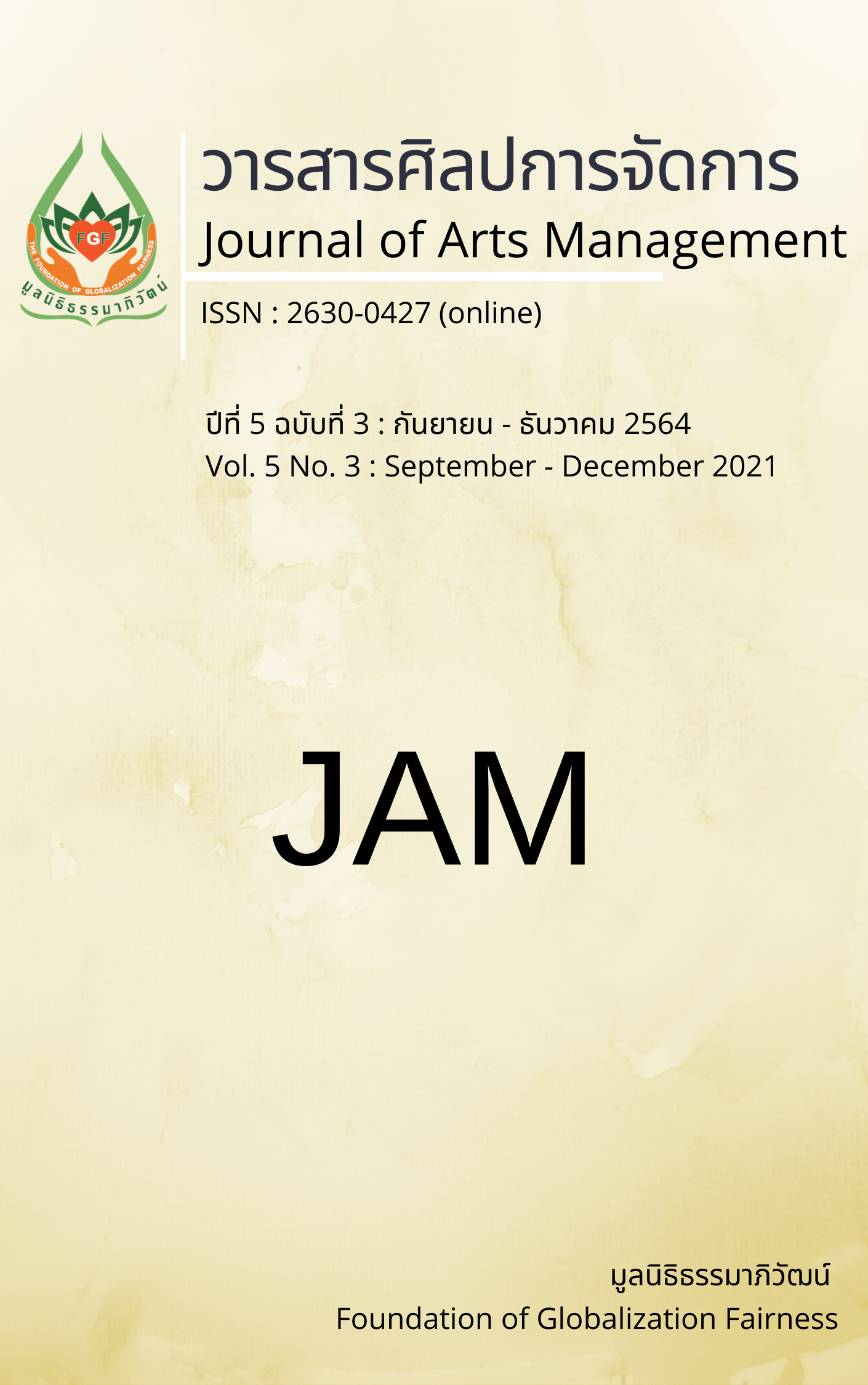The Study of the Correlation of Personnel Dimension Work Collaboration and Work Environment Effect to Working Strategies 4.0 Era of Academic Supporting Personnel of King Mongkut’s University of Technology North Bangkok
Main Article Content
Abstract
This research aimed to study the correlation between personnel dimension, work collaboration, work environment, and the strategy 4.0 era of personal support of King Mongkut’s University of Technology North Bangkok. The population was the personal support of King Mongkut’s University of Technology North Bangkok 1,570 people and 400 samples to test reliability and Cronbach's alpha coefficient and Pearson Correlation values analyzed by using SPSS for Windows. The results revealed that personnel dimension, work collaboration, and work environment were positively correlated with the work strategy 4.0 era of personal support of King Mongkut’s University of Technology North Bangkok at the statistically significant at 0.01 level.
Article Details
Views and opinions appearing in articles in the Journal of Arts of Management It is the responsibility of the author of the article. and does not constitute the view and responsibility of the editorial team I agree that the article is copyright of the Arts and Management Journal.
References
Bahji, S. E., Lefdaoui, Y., & Alami, J. E. (2012). The learning model S2P: A formal and a personal dimension. International Conference on Next Generation Networks & Services, 7-12. doi/10.1109/NGNS.2012.6656067.
Boraha, D., Malikb, K., & Massini, S. (2019). Are engineering graduates ready for R&D jobs in emerging countries? Teaching-focused Industry-academia collaboration strategies. Research Policy, 48(9), 1-15. doi.org/10.1016/j.respol.2019.103837.
Chuayounan, S. et al. (2016). The study of work behavior’s characteristics and meaning based on the concept of Thailand education criteria for performance of Government universities’ support staffs in Thailand. Veridian E-Journal, Silpakorn University (Humanities, Social Sciences and arts), 9(1), 768-779.
Decker, J. L., & Shellenbarger, T. (2012). Strategies for nursing faculty to promote a healthy work environment for nursing students. Teaching and Learning in Nursing, 7(2), 56-61.
Droogenbroeck, V. F., Spruyt, B., & Vanroelen, C. (2014). Burnout among senior teachers: investigating the role of workload and interpersonal relationships at work. Teaching and Teacher Education, 43, 99-109.
Hair, J. F., Black, W., Babin, J., Anderson, R.E., & Tathan, R. L. (2006). Multivariate data analysis. Prentice Hall.
Hinkle, D. E, William, W., & Stephen, G. J. (1998). Applied statistics for the behavior sciences (4th ed.). Houghton Mifflin.
King Mongkut's University of Technology North Bangkok. (2019). University personnel information system. www.kmunb.ac.th.
Kitpreedabrisut, B. (2006). Techniques for creating data collection tools for research (7th ed.). Sri Anan Printing.
Kunish, S., Keil, T., & Bopple, M. (2019). Strategic initiative portfolios: How to manage strategic challenges better than one at a time. Business Horizons, 62, 529-537.
Maican, I. C., Cazan, A.-M., & Lixandroiu, C. R. (2019). A study on academic staff personality and technology acceptance: The Case of Communication and Collaboration Applications. Computers & Education 128, 113-131.
Meechaisue, P. (2005). Factors affecting employee job performance: A case study of Thai Telecommunications Industry[Doctoral Dissertation, Ramkhamhaeng University].
Mintzberg, H., & Waters, A. J. (1985). Of strategies, Deliberate and Emergent. Strategic Management Journal, 6(3), 257-272.
Noll, B., Filatova, T., & Need, A. (2020). How does private adaptation motivation to climate change very across cultures? Evidence from a Meta-analysis. International Journal of Disaster Risk Reduction, 46, 1-12. doi.org/10.1016/j.ijdrr.2020.101615.
Salau, O. et al. (2018). Survey data on work environment and productivity of academic staff of selected public university in Nigeria. Data in Brief, 19, 1912-1917.
Sander, E. J. (2019). Psychological perceptions matter: Developing the reactions to the physical work environment scale. Building and Environment, 148, 338-347. https://doi.org/10.1016/j.buildenv.2018.11.020
Sanguanwongwan, W. (2007). Management and organizational behavior. SE-EDUCATION.
Shafieea, M., Gheidi, S., Khorrami S. M., & Hooshang, A. (2020). Proposing a new framework for personal brand positioning. European Research on Management and Business Economics 26, 45-54.
Shigekatsu, N. (1997). Zero accident elimination (2nd ed.). Thai-Japan Technology Promotion Association.
Teresa, M., & Bolívar-Ramos. (2017). The relation between R&D spending and patents: The moderating effect of collaboration networks. Journal of Engineering and Technology Management, 46, 26-38.
Tirakanan, S. (2006). The use of statistics in social science research: A practical guide. Bangkok: Chulalongkorn University Printing House.
Wang, W., Cao, Q., Qin, L., Zhang, Y., Feng, T., & Feng, L. (2019). Uncertain environment, dynamic innovation capabilities and innovation strategies: A case study on Qihoo 360. Computers in Human Behavior, 95, 284-294.


